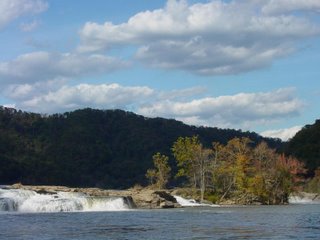(Film presented with permission of Dr. Jeff Humphries)
Hellbenders!
The wonderful short film above is the work of Dr. Jeff Humphries who was a graduate student in Biological Sciences at Marshall University in Huntington, WV. Jeff’s research was directed toward the study of the Eastern Hellbender (Cryptobranchus alleganiensis).
Jeff was a graduate student of Dr. Tom Pauley at Marshall. Tom is the expert on West Virginia amphibians and reptiles. When I was teaching Vertebrate Zoology here at Glenville State College, our herpetological bible was N. Bayard Green and Thomas K. Pauley’s field guide entitled “Amphibians and Reptiles in West Virginia”. Herpetology at Marshall began in the 1930's under the direction of Dr. N. Bayard Green. I was Dr. Green’s last graduate student. He retired in 1971. Since then, Dr. Pauley has taken up the leadership of the research focusing on the herps in West Virginia.
The Eastern Hellbender is West Virginia’s largest salamander and may attain a length of twenty inches. This primitive looking critter is an aquatic salamander whose characteristics include a large flattened head with small, lidless eyes; a wrinkled fold of skin along each side of the body between the fore and hind limbs; five toes on the hind foot (not to confuse it with the Mudpuppy that has 4 toes on the hind foot); and, large gill slits that lie in front of each forelimb (the Mudpuppy has external gills).
My last posting dealt with the rescue of a Green Heron along the Greenbrier River. I certainly can not think of the Greenbrier River without thinking of the marvelous populations of Hellbenders I have had the privilege of observing within its waters. I worked at Park Naturalist at Watoga State Park in the summers while completing my undergraduate degree and had the responsibility of planning nature activities for the tourists (campers). One of the evening activities was hellbender watching! (Do you think the campers had heard of hellbenders? No! - that was what made this nature trip very popular.)
The Greenbrier is a clear river with many flat rocks. Hellbenders spend much of the time under the flat rocks and emerge at night to forage for food. With lights and lanterns in hand, we would wait until dark and then our group would quietly wade the waters of the Greenbrier. How neat are the memories of the reactions of the “campers”! They were not only amazed by the sight of these wonderful creatures, but they also learned how very, very slippery rocks are in the Greenbrier. Yes, I always put in the nature description – “Be Prepared to Get Wet!”











